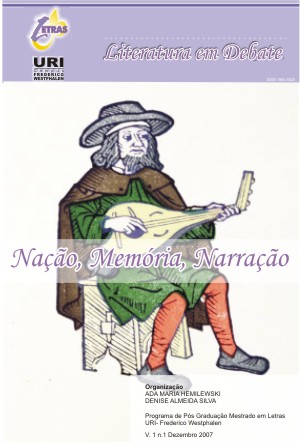A MENTIRA BEM CONTADA: VOZ NARRATIVA E VEROSSIMILHANÇA NOS ROMANCES DE ROSA E RULFO
Palavras-chave:
Narrativa do século XX . Grande sertão, veredas. Pedro PáramoResumo
Pedro Páramo (1955), de Juan Rulfo, e Grande sertão: veredas (1956), de Guimarães Rosa, valem-se de procedimentos semelhantes para instituir uma aliança entre o leitor e a ficção. Tais procedimentos integram um elenco genérico, passível de descrição, e se empregam com invulgar eficácia nos textos estudados. Sem levar em conta possíveis relações especulares entre a experiência de vida dos autores e suas criações literárias - pressupondo, por exemplo, que Comala é um retrato da infância de Rulfo e que o “grande sertão” de Guimarães Rosa resulta das observações feitas pelo autor em suas viagens pelo sertão brasileiro -, este artigo se propõe realizar uma leitura comparativa dos romances que privilegie alguns recursos técnicos e estilísticos com que logram disfarçar em naturalidade seu artifício.
THE WELL-TOLD LIE: NARRATIVE VOICE AND VERISIMILITY IN ROSA´S AND RULFO´S NOVELS
Juan Rulfo´s Pedro Páramo (1955) and Guimarães Rosa´s Grande sertão: veredas (1956), resort to similar procedures to promote an alliance between the reader and their fiction. These generic procedures may be described, and are masterly used in these texts. Without taking into
consideration possible relationships between the writer´s life and their literary creations, and presuposing Comala to be a pictures of Rulfo´s childhood and Rosa´s “great hinterland” to be the result of the writer´s observations along his travellings in Brazilian hinterland, this paper proposes a comparative reading of the novels that highlights some of the technical resources used by the writers to naturalize their aritifice.
Publicado
Como Citar
Edição
Seção
Licença

O trabalho Revista Literatura em Debate de Revista Literatura em Debate foi licenciado com uma Licença Creative Commons - Atribuição 3.0 Não Adaptada.
A submissão de artigos, resenhas e trabalhos de escrita criativa significa que o autor(es) está(ão) cedendo gratuitamente à revista direitos autorais para publicação dos textos e concordando com as normas de submissão apresentadas pelo periódico.
Em caso de republicação, solicita-se apenas referendar o ano e volume de nossa revista onde ocorreu a publicação inicial.

